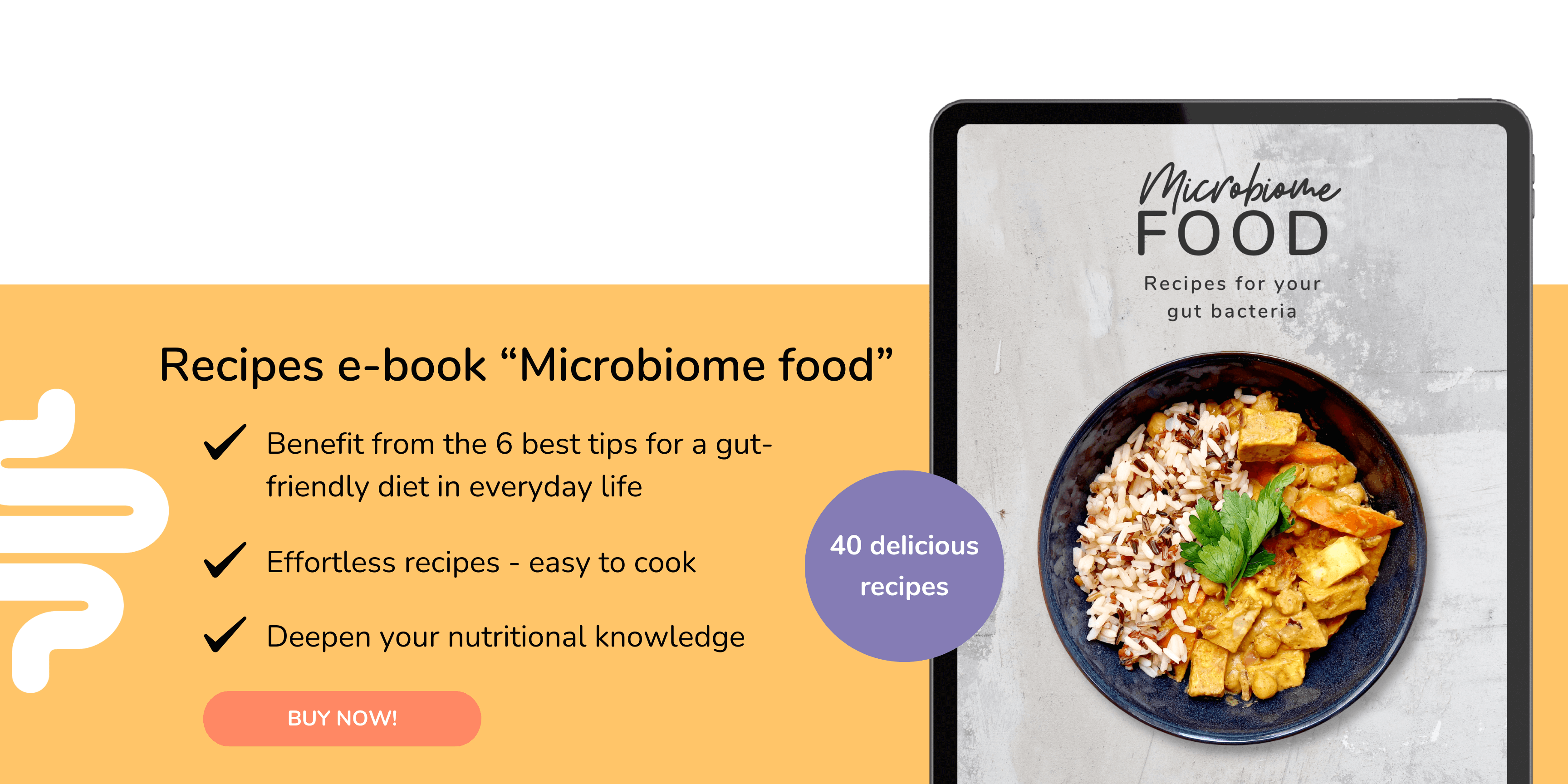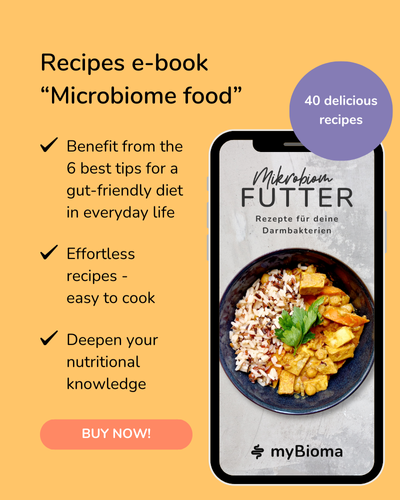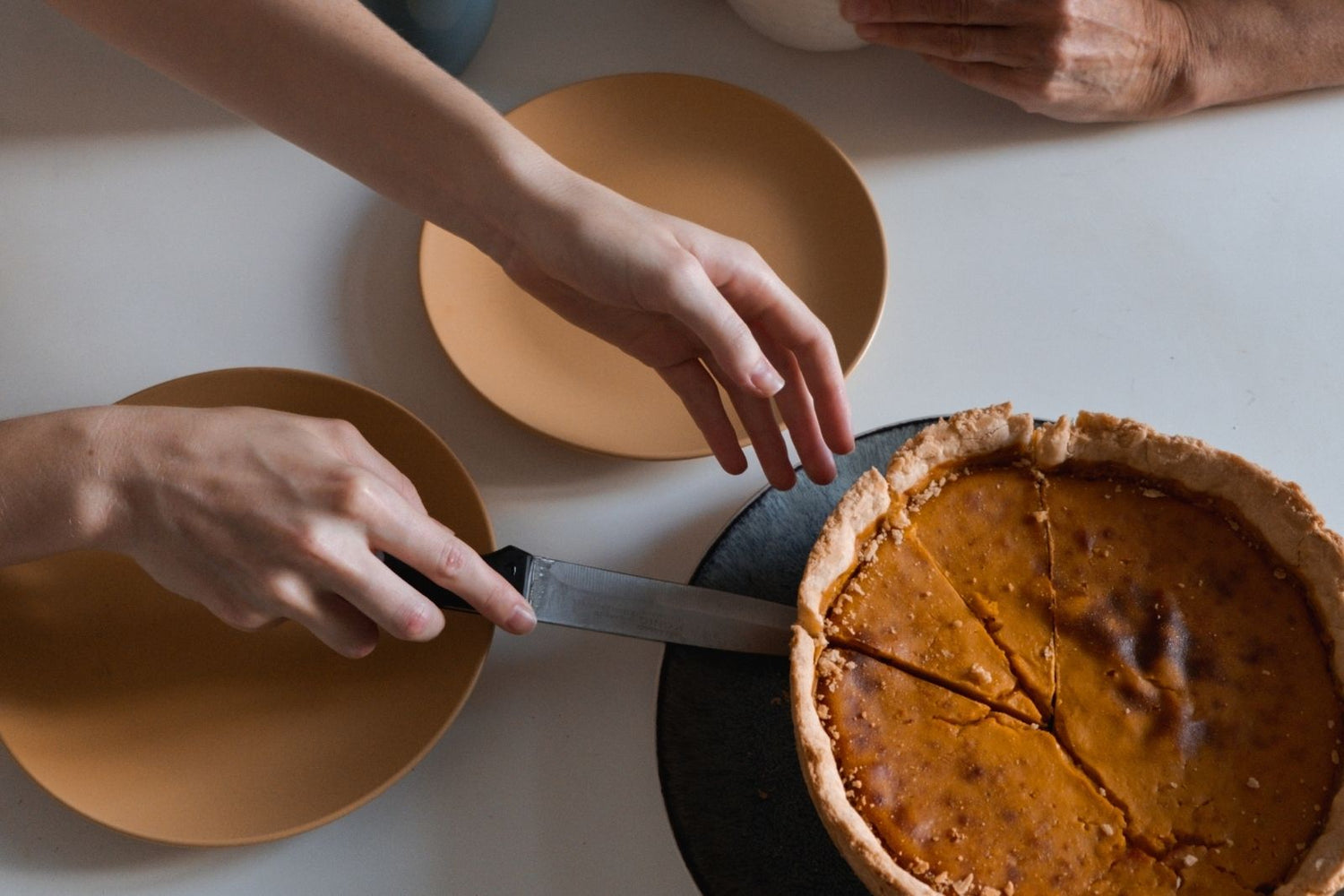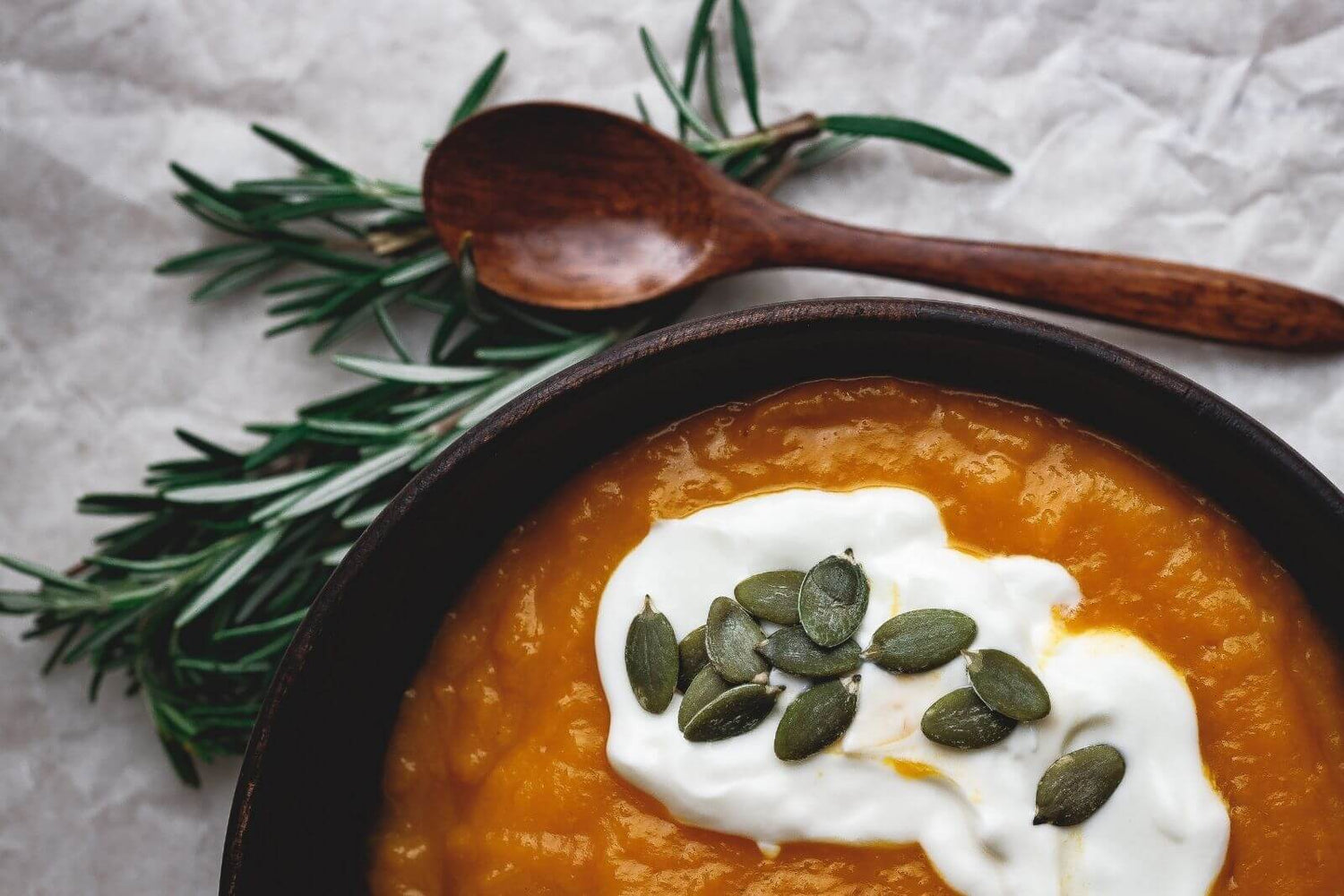Table of contents
In the haunted silence of Halloween night, sinister companions may awaken in the depths of your digestive tract, ready to disrupt the balance within you. The good bacteria, tiny little heroes, watch over your intestinal kingdom, but the evil microbes lurk in the dark. But don't worry: with the right diet, you can give empower your gut warriors to drive the evil microbes away.
Horror stories aside, we have a delightfully spooky Halloween recipe for you! We turn colourful bell peppers into mischievous jack-o'-lanterns, fill them with nutrient-rich quinoa and blood-red beans, and top them off with a bone-strong feta crown.
Ingredients
- 80 g quinoa
- 4 bell peppers (yellow, red or orange)
- 1 red onion
- 1 tablespoon tomato paste
- 200 g mushrooms
- 100 g red cabbage
- 100 g zucchini
- 200 g cooked kidney beans
- 3 cloves of garlic
- 1 teaspoon cumin
- 1 teaspoon chili powder
- salt & pepper
- italian herbs
- 200 g feta
- sprouts as a topping

These ingredients are used to stuff the bell peppers.
Preparation
- Place the quinoa in a sieve and rinse thoroughly under running water. Cook with double the amount of water and a little salt for about 15 minutes until soft.
- Preheat the oven to 180 degrees and prepare a lightly greased or parchment-lined baking dish.
- For the bell pepper filling, chop the onion, mushrooms, zucchini and red cabbage.
- Sauté the onions in a large pan with some olive or rapeseed oil until they turn translucent. Add the finely chopped garlic and sauté briefly.
- Add the tomato paste and the remaining vegetables, and sauté them briefly as well.
- Rinse the kidney beans, add them and season with cumin, Italian herbs, chili, salt & pepper.
- Add the quinoa to the pan and season to taste.
- Cut the tops of the bell peppers open and remove the "lid" and seeds. For a spooky touch, carve a creepy pumpkin face into them.
- Use a spoon to fill the bell peppers with the mixture.
- Place the stuffed bell peppers in the baking dish and bake for about 30 minutes.
- Remove from the oven, and serve with feta & sprouts on top.

Enjoy your meal! 🎃
So much power is packed into this recipe
Quinoa
Quinoa is one of the so-called pseudocereals - naturally gluten-free plant seeds that can be used in the kitchen in a similar way to cereals. This makes our recipe well tolerated by people with celiac disease or gluten sensitivity. In addition, quinoa has numerous other health benefits: It is full of fiber, minerals such as potassium, calcium, magnesium and iron, and has a particularly high folic acid content. The protein content and, above all, the protein quality are particularly striking: Quinoa provides all the essential amino acids required for protein synthesis, including lysine, an amino acid that is rarely found in wheat and similar grains (1). Quinoa also contains some useful secondary plant substances such as polyphenols, which have antioxidant, anti-inflammatory and antimicrobial properties, among other things, and support a healthy gut microbiome (2).
Bell peppers
Bell peppers are rich in carotenoids – secondary plant compounds that are responsible for their vibrant colour and have anti-inflammatory and immune system-boosting properties (4). Additionally, peppers are packed with vitamin C: just one fresh, raw pepper can meet your daily vitamin C requirement (3)! However, since this vitamin is sensitive to heat, much of it is unfortunately lost in this recipe. As an alternative, you could fill raw peppers and skip the baking altogether.
Kidney beans
Legumes like beans are not only a great source of plant-based protein, but also an excellent way to provide your gut bacteria with fibre. Regular consumption of legumes can promote the growth of beneficial bacteria, increase the production of protective compounds like short-chain fatty acids, and thus support your metabolic health (5).
Feta cheese
Feta is a cheese originating from Greece that is traditionally made from sheep's milk and aged in brine. Like other dairy products, feta is an excellent source of high-quality protein and calcium, which contributes to bone health. It also contains important nutrients such as vitamins B2 and B12, as well as iodine, healthy fatty acids and probiotic lactic acid bacteria (6,7).
You can also find even more delicious recipes and exciting nutritional knowledge in our comprehensive recipe e-book "Microbiome Food" .
References
- Neumann E, Schächtele J. Federal Center for Nutrition (Bzfe). 2023. Pseudocereals. Available at: https://www.bzfe.de/lebensmittel/trendlebensmittel/pseudogetreide/
- Xi X, Fan G, Xue H, Peng S, Huang W, Zhan J. Harnessing the Potential of Quinoa: Nutritional Profiling, Bioactive Components, and Implications for Health Promotion. Antioxidants. Jul 10, 2024;13(7):829.
- Kreutz H. Vegetable peppers. 2019. Available at: https://www.bzfe.de/service/news/aktuelle-meldungen/news-archiv/meldungen-2019/mai/gemuesepaprika/
- DGE. 2014. German Society for Nutrition: Secondary plant substances and their effects on health – an update based on the 2012 nutrition report. Available at: http://www.dge.de/wissenschaft/fachinformationen/sekundaere-pflanzenstoffe-und-die-gesundheit/
- Kadyan S, Sharma A, Arjmandi BH, Singh P, Nagpal R. Prebiotic Potential of Dietary Beans and Pulses and Their Resistant Starch for Aging-Associated Gut and Metabolic Health. Nutrients. April 21, 2022;14(9):1726.
- Semeco A. Healthline. 2017. Feta Cheese: Good or Bad? Available at: https://www.healthline.com/nutrition/feta-cheese-good-or-bad
- German Nutrition Society (DGE). Milk and dairy products. Available at: http://www.dge.de/gesunde-ernaehrung/gut-essen-und-trinken/dge-ernaehrungskreis/milch-und-milchprodukte/







